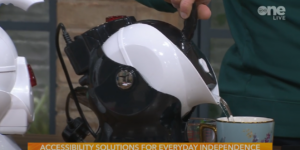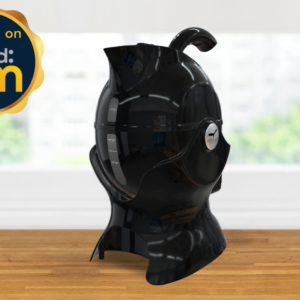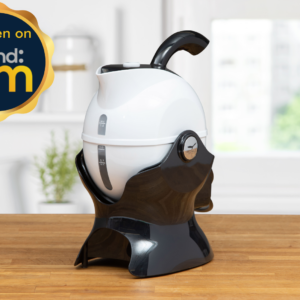We are heading into a real winter of ‘unknown’ this year, with increasing oil and gas costs internationally, contributing to a rise in inflation, further fueled by the Russian invasion of Ukraine. Where these price increases will be felt the most will be in the pockets of ordinary citizens, as we try to ensure that we have sufficient heat and light this winter.
Modern homes have many more devices, appliances, and sources of heat and light than in previous generations, further deepening our dependance on electricity.
However, there are certain things we can do to limit unnecessary usage of electricity, by first figuring out which are the most expensive to run.
A good way to start is by reading the energy bill to see what parts of the day or night you are using most energy. It can be an easy deduction to figure out what is being used during that particular time. Also, if you have night rates, it might be an idea to keep some of the energy intensive appliance dormant until then. This is a real easy way to reduce your bill.
However, our focus today is on hot water appliances and how you can reduce energy costs with them.
The Silent Appliance Killer:
If you’re trying to reduce your energy bills, you have probably looked at the costs of home insulation, solar panels, and a smart meter. But did you know living in an area with hard water will mean paying more for your energy? In fact, hard water can add up to 28% more to your annual bill.
With hard water comes limescale. A chalky white crust that lives in any appliance that deals with hot water. Limescale is a residue that is left behind by hard water. Sadly, if you don’t take measures to reduce it, it will increase your overall energy costs..
How to Make Kitchen Appliances More Energy Efficient:
The Kettle
The average Irish person enjoys over 1,460 cups of tea a year. That’s about 4 cups of tea a day. The chances are this is likely to increase now that we are moving into the chilly winter months. It may not just be for tea either, with energy bills where they are, it’s back to wooly socks and hot water bottles for us all.
Making Your Kettle More Energy Efficient:
- Reduce Limescale:
There are many hard water areas up and down the country. A great way to descale your kettle is with Oust, an all-purpose descaler.
- Half fill your kettle and put it onto boil.
- Unplug the kettle and place it on your draining board.
- Pour in 1 sachet of Oust and leave for 10 minutes.
- Rinse and boil again with clean water.
- Rinse 1 last time & good as new.
Ridding your kettle of limescale means that it does not need to work as hard to boil your water. This will have a positive effect on your energy costs.
- Boil What you need:
Did you know it’s more expensive to boil a full kettle? Well, it’s true. This winter, only boil what you need. Use a trick from our book. We keep a small jug or a cup by our Uccello Kettle to help us fill it. This means for every cup added to the kettle, we are only boiling exactly what is needed. - Make a Round:
If you live with others, it would be a good idea to start promoting rounds of tea. When you decide to make one, ask about the house if they would like to be added. This will save you from seeing multiple boils throughout the day.
The Dishwasher
In order to save and preserve water, it is recommended that we start to use a dishwasher. It is efficient and won’t use as much water as a hand wash will. It also means you don’t have to stand bent of the sink to clean which is a great plus. But what about when it starts to cost more than it should? What do you do to reduce the cost of running the dishwasher?
- Remove Limescale:
Limescale can create increase the cost of running yours, create serious damage or even costly breakdowns. Therefore, it is crucial to ensure that your dishwasher is descaled on a regular base. Oust has a great dishwasher & washing machine descaler to try out:
- Empty 1 sachet into an empty machine.
- Put the dishwasher on for 1 hot wash.
- Once dry, your dishwasher is ready to run.
- Turn Off Before Drying Cycle:
By turning your dishwasher off before it hits its drying cycle you are helping to reduce the cost of running it each time. Turning off your dishwasher before then and leaving the door open so they can dry naturally will all help in the long run.
- Use Eco Settings:
Most of the dishwashers have an ‘eco wash’ setting. This generally means that they use less water and less time to clean. Eco wash should be used for everyday cleaning. You would only need a hotter more intense wash if you were dealing with greasy dishes.
The Washing Machine
- Protect Your Machine:
As we mentioned above, Oust has a dishwasher & washing machine descaler that can help you do this. All you need to do is:
- Empty a sachet into the draw of your washing machine.
- Make sure the drum is empty.
- Put it on a hot wash without pre-wash.
- Your machine is ready to go.
- Make Sure It’s Full:
Say goodbye to the half-wash. Putting your machine on for multiple half washes isn’t going to help you reduce your energy costs one bit. When it comes to putting on a wash, make sure it’s a full one. Ask around the house perhaps there are some socks, or shirts behind a door or under the bed?
- Wash At 30:
Similar to a dishwasher, most of the energy used by a washing machine is to heat water. By choosing to run yours at a lower temperature (30 degrees Celsius) you will be able to save energy and money.
Yes, we are headed for uncertain times, but the the phrase ”this too shall pass” comes to mind. You don’t need to renovate your home or stock up on blankets to save money on your energy bills. By changing a few habits about the home, you can reduce your energy usage and your bills.














Leave a Comment